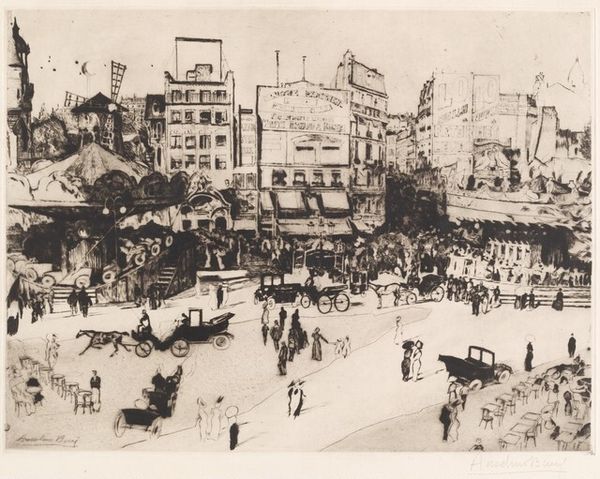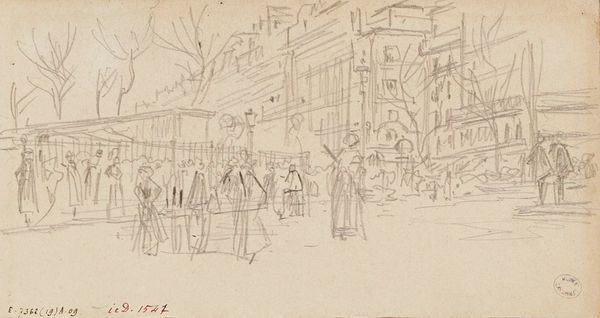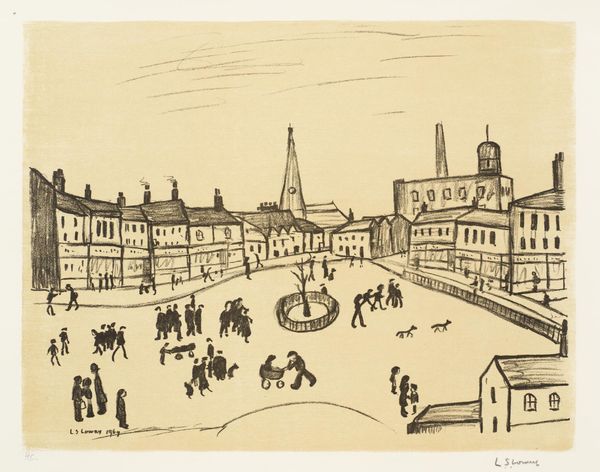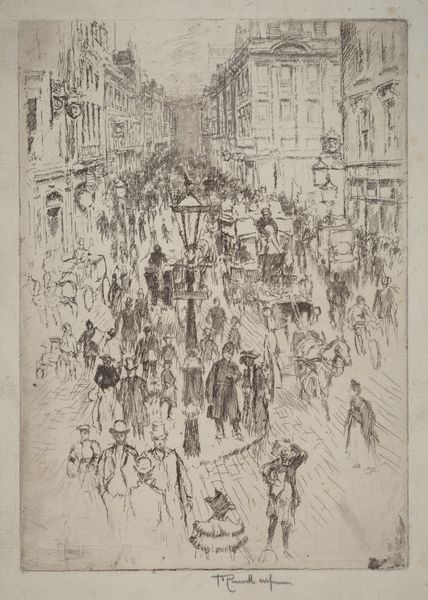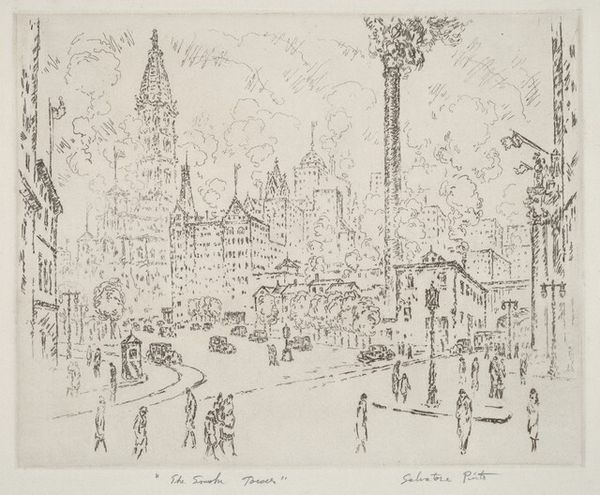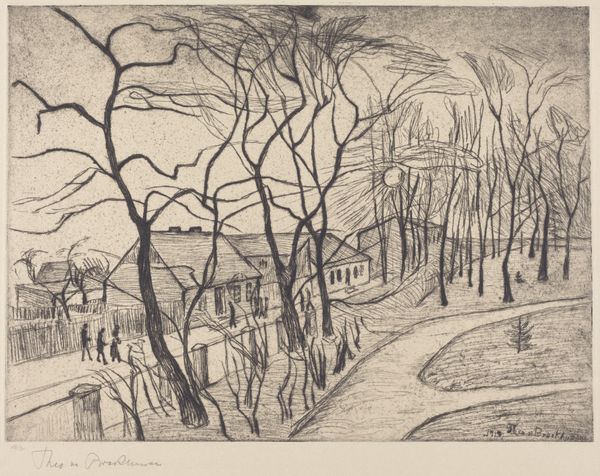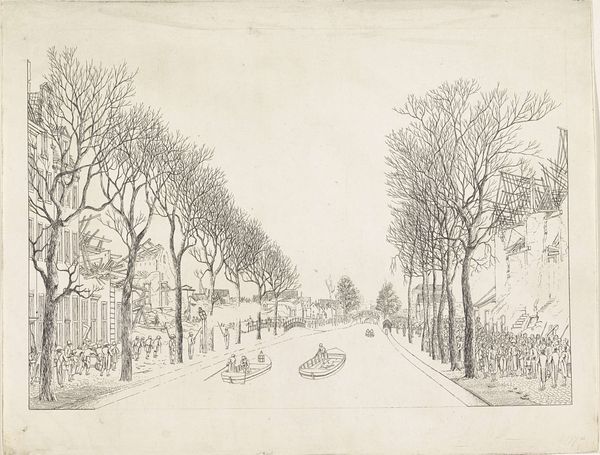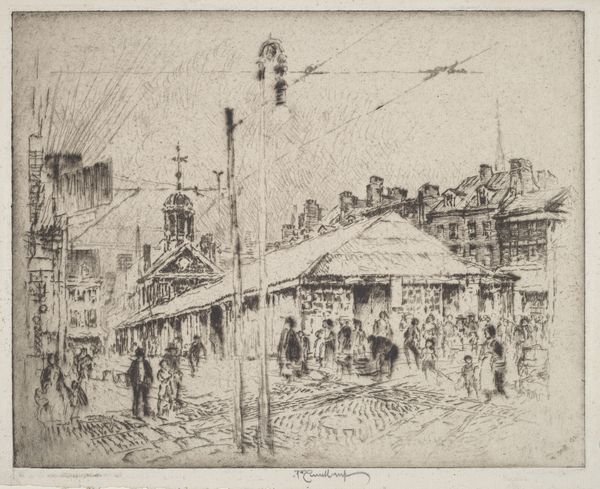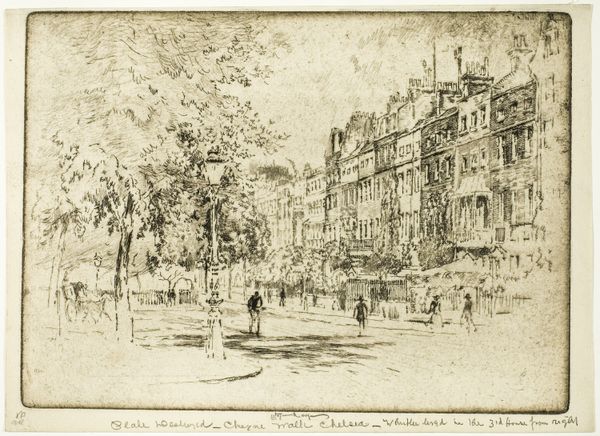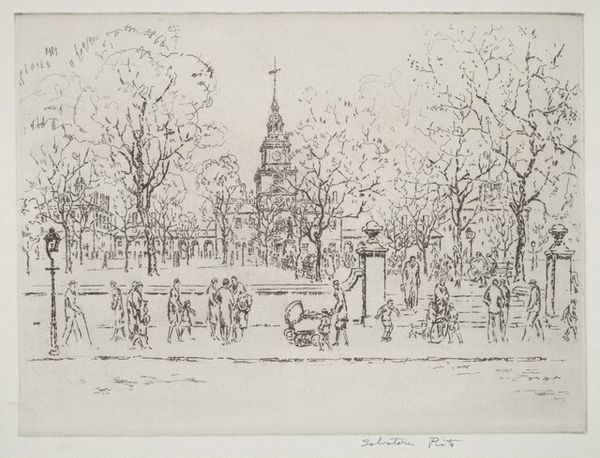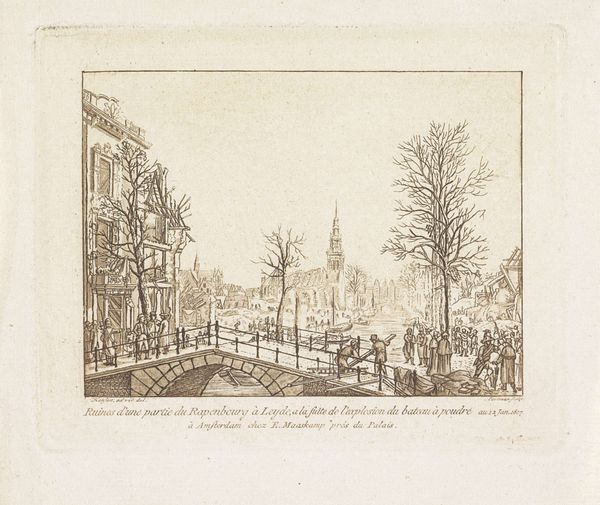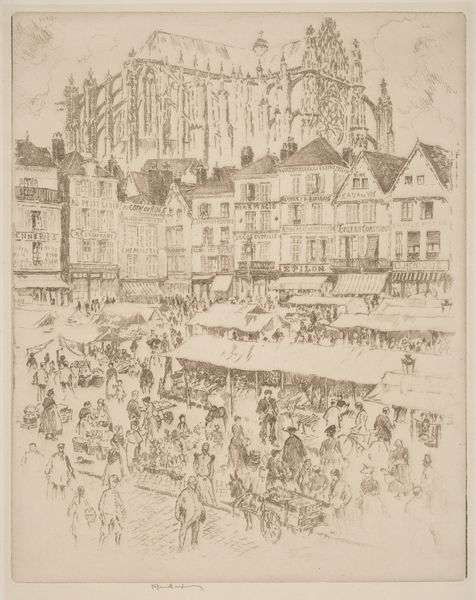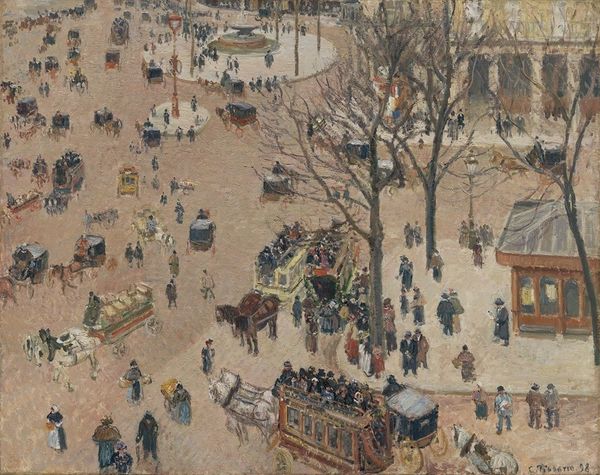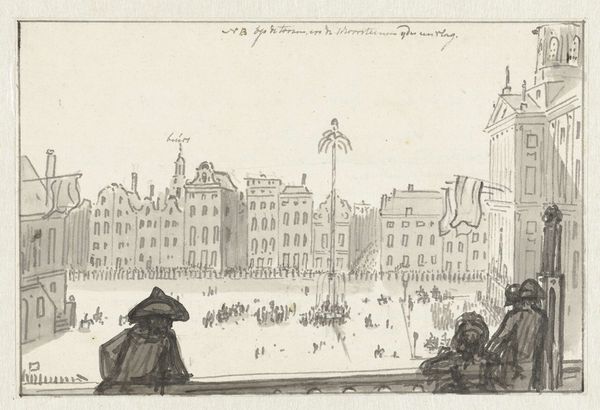
drawing, print, ink
#
drawing
#
quirky sketch
# print
#
pen sketch
#
figuration
#
personal sketchbook
#
ink
#
sketchwork
#
ink drawing experimentation
#
pen-ink sketch
#
expressionism
#
line
#
pen work
#
sketchbook drawing
#
cityscape
#
storyboard and sketchbook work
#
sketchbook art
Copyright: National Gallery of Art: CC0 1.0
Editor: So, this is Theo von Brockhusen’s “City Square,” done in ink. It's like looking at a really busy, bustling place frozen in time, all done with these frantic lines. It's a little unsettling, but it really makes you wonder what's happening in the lives of all those tiny figures. What do you see in this piece? Curator: This ink drawing immediately strikes me as a social document. Look at how Brockhusen captures the energy of urban life, but also hints at the anonymity and alienation that can come with it. What social classes are represented, and how do they interact – or not interact – in this public space? Consider, too, the historical context of early 20th-century urbanism and industrialization. Does this composition mirror the power structures inherent in such a society? Editor: I hadn't thought about power structures. I was just kind of getting lost in the detail. So the way people are positioned or drawn... that tells a story? Curator: Absolutely. Think about who is centered, who is marginalized, what perspectives are prioritized, what sort of person could easily get away with something and who would get accused first? Art doesn't exist in a vacuum. Brockhusen had a perspective, and biases whether consciously or not, so what biases are there? How are we viewing and interpreting public space now versus when this was drawn? These visual choices shape our understanding of the society depicted. Editor: That's fascinating. So, it’s not just a picture of a city; it's a statement about that city. Curator: Exactly! It's about examining how visual representations both reflect and shape social realities and inequalities. Editor: Well, I’ll definitely be looking at cityscapes differently now. Thank you. Curator: It was my pleasure. Remember, art is always in dialogue with its context, and our role is to listen critically to what it has to say.
Comments
No comments
Be the first to comment and join the conversation on the ultimate creative platform.
